Effect of Expansion Agent and Glass Fiber on the Dynamic Splitting Tensile Properties of Seawater–Sea-Sand Concrete
Abstract
1. Introduction
2. Materials and Methods
2.1. Raw Materials
2.2. Specimen Preparation
2.3. Testing Methods
2.3.1. Static Splitting Tensile Test
2.3.2. Dynamic Splitting Tensile Test
3. Results and Discussion
3.1. Analysis of Results of Dynamic Splitting Tensile Test
3.2. Failure Mode
3.3. Overload Correction
3.4. Strain Rate Effect
3.5. Energy Dissipation Analysis
3.6. Limitations and Prospects
4. Conclusions
- (1)
- The damage modes of the four groups of SSC at three different approximate strain rates all exhibited clear horizontal radial cracking along the center, which was less pronounced at lower strain rates. Nevertheless, the cracks in the specimens gradually widened with increasing strain rates. At low strain rates (1.10 s−1), the incorporation of glass fibers proved to be more effective than the addition of the expansion agent in enhancing damage modal integrity. However, at a high strain rate (2.24 s−1), the SSC with the combined admixture of expansion agent and glass fibers demonstrated better damage modal integrity than the other three groups.
- (2)
- The dynamic splitting tensile strength of the four SSC groups, as measured in the dynamic Brazilian disc test, exhibited significant overload, with higher strain rates amplifying the overload effect. To monitor crack initiation at the center of the disc and correct for overload, strain gauges were strategically placed. The overload ratio, denoted as S0, was introduced for the quantitative analysis. The overload ratio displayed a logarithmic increase with the stress rate. When the stress rate reached approximately 100 GPa/s, the measured dynamic splitting tensile strength of the mixed expansion agent and glass fiber-reinforced SSC was overestimated by 38%. At this point, the overload effect became substantial and cannot be overlooked.
- (3)
- The critical strain rates for the four SSC groups fell within the range of 1.06–1.31 s−1, similar to the critical strain rate of ordinary concrete, which is approximately 1.00 s−1. At below-critical strain rates, the strain rate effect of the mixed expansion agent and glass fiber-reinforced SSC was negligible. However, at above-critical strain rates, the specimens exhibited a significant strain rate effect, demonstrating heightened sensitivity, particularly showcasing a robust rate sensitivity.
- (4)
- The energy dissipation ratio of the mixed expansion agent and glass fiber-reinforced SSC surpasses that of the other three groups at comparable impact energy levels. The synergistic effect between the expansion agent and glass fiber contributed to superior cushioning and energy dissipation under impact loading. The energy consumption ratio curves for the four SSC groups showed a decreasing trend with escalating impact energy. This indicates that SSC becomes more brittle when subjected to higher impact energy levels.
- (5)
- At present, the research on the mechanical properties of seawater–sea-sand concrete is still based on compressive strength; in comparison, the investigation of tensile strength has received less research interest. However, the research on the synergistic reinforcement effect of expansion agents and fibers is still based on static mechanical properties, with the dynamic impact property receiving less research interest. Using static loading methods may not authentically reflect the dynamic splitting tensile properties of concrete. Therefore, the SHPB device was employed in this study to conduct Brazilian disc tests. The tested nominal tensile strength was corrected for overload using a quantitative analysis to obtain the true tensile strength. Investigating the dynamic tensile properties of the expansion agent and glass fiber-reinforced seawater–sea-sand concrete under impact can support the development of seawater–sea-sand concrete with excellent dynamic splitting tensile properties.
Author Contributions
Funding
Data Availability Statement
Acknowledgments
Conflicts of Interest
References
- Nham, N.T.H.; Ha, L.T. The role of financial development in improving marine living resources towards sustainable blue economy. J. Sea Res. 2023, 195, 102417. [Google Scholar] [CrossRef]
- Jiang, S.-S.; Li, J.-M. Exploring the motivation and effect of government-enterprise collusion in the utilization of marine resources: Evidence from China’s coastal areas. Ocean. Coast. Manag. 2021, 212, 105822. [Google Scholar] [CrossRef]
- Yang, Z.; Zhan, X.; Zhu, H.; Zhang, B.; Feng, P.; Li, H.; Kua, H.W. Performance-based alkali-activated seawater sea-sand concrete: Mixture optimization for mechanical, environmental, and economical objectives. Constr. Build. Mater. 2023, 409, 134156. [Google Scholar] [CrossRef]
- Liu, X.; Asghari, V.; Lam, C.-M.; Hsu, S.-C.; Xuan, D.; Angulo, S.C.; John, V.M.; Basavaraj, A.S.; Gettu, R.; Xiao, J.; et al. Discrepancies in life cycle assessment applied to concrete waste recycling: A structured review. J. Clean. Prod. 2024, 434, 140155. [Google Scholar] [CrossRef]
- Tayebani, B.; Said, A.; Memari, A. Less carbon producing sustainable concrete from environmental and performance perspectives: A review. Constr. Build. Mater. 2023, 404, 133234. [Google Scholar] [CrossRef]
- Liu, F.; Zhang, J.; Sun, J.; Zhao, D.; Gao, D.; Ma, Z.; Song, H.; Wu, R.; Zhang, W. The ice resistance of self-centering jacket offshore platform with concrete filled double-skin legs: Experimental study and numerical analysis. Ocean Eng. 2023, 287, 115876. [Google Scholar] [CrossRef]
- Jiang, S.; Chen, G.; Zhu, Y.; Li, X.; Shen, X.; He, R. Real-time risk assessment of explosion on offshore platform using Bayesian network and CFD. J. Loss Prev. Process. Ind. 2021, 72, 104518. [Google Scholar] [CrossRef]
- Demirci, S.E.; Elçiçek, H. Scientific awareness of marine accidents in Europe: A bibliometric and correspondence analysis. Accid. Anal. Prev. 2023, 190, 107166. [Google Scholar] [CrossRef]
- Yan, Z.-W.; Bai, Y.-L.; Ozbakkaloglu, T.; Gao, W.-Y.; Zeng, J.-J. Rate-dependent compressive behavior of concrete confined with Large-Rupture-Strain (LRS) FRP. Compos. Struct. 2021, 272, 114199. [Google Scholar] [CrossRef]
- Bai, Y.-L.; Yan, Z.-W.; Ozbakkaloglu, T.; Gao, W.-Y.; Zeng, J.-J. Mechanical behavior of large-rupture-strain (LRS) polyethylene naphthalene fiber bundles at different strain rates and temperatures. Constr. Build. Mater. 2021, 297, 123786. [Google Scholar] [CrossRef]
- Yan, Z.-W.; Bai, Y.-L.; Ozbakkaloglu, T.; Gao, W.-Y.; Zeng, J.-J. Axial impact behavior of Large-Rupture-Strain (LRS) fiber reinforced polymer (FRP)-confined concrete cylinders. Compos. Struct. 2021, 276, 114563. [Google Scholar] [CrossRef]
- Xiang, J.; Qiu, J.; Zhao, Y.; Zheng, P.; Peng, H.; Fei, X. Rheology, mechanical properties, and hydration of synergistically activated coal gasification slag with three typical solid wastes. Cem. Concr. Compos. 2024, 147, 105418. [Google Scholar] [CrossRef]
- Yang, L.; Xie, H.; Zhang, D.; Zhang, F.; Lin, C.; Fang, S. Acoustic emission characteristics and crack resistance of basalt fiber reinforced concrete under tensile load. Constr. Build. Mater. 2021, 312, 125442. [Google Scholar] [CrossRef]
- Xiang, J.; Qiu, J.; Wu, P.; Zhang, Q.; Song, Y.; Yang, L. Autolytic capsules incorporating alkali-activated slag system for self-healing cementitious composites. Cem. Concr. Compos. 2024, 105439. [Google Scholar] [CrossRef]
- Liang, N.; Geng, S.; Mao, J.; Liu, X.; Zhou, X. Investigation on cracking resistance mechanism of basalt-polypropylene fiber reinforced concrete based on SEM test. Constr. Build. Mater. 2024, 411, 134102. [Google Scholar] [CrossRef]
- Zhen, H.; Xiong, Z.; Song, Y.; Li, L.; Qiu, Y.; Zou, X.; Chen, B.; Chen, D.; Liu, F.; Ji, Y. Early mechanical performance of glass fibre-reinforced manufactured sand concrete. J. Build. Eng. 2024, 83, 108440. [Google Scholar] [CrossRef]
- Ahmed, S.; Ali, M. Use of agriculture waste as short discrete fibers and glass-fiber-reinforced-polymer rebars in concrete walls for enhancing impact resistance. J. Clean. Prod. 2020, 268, 122211. [Google Scholar] [CrossRef]
- Wang, W.; Zhang, Y.; Mo, Z.; Chouw, N.; Jayaraman, K.; Xu, Z.-D. A critical review on the properties of natural fibre reinforced concrete composites subjected to impact loading. J. Build. Eng. 2023, 77, 107497. [Google Scholar] [CrossRef]
- Xie, C.; Cao, M.; Khan, M.; Yin, H.; Guan, J. Review on different testing methods and factors affecting fracture properties of fiber reinforced cementitious composites. Constr. Build. Mater. 2021, 273, 121766. [Google Scholar] [CrossRef]
- Mastali, M.; Dalvand, A.; Sattarifard, A. The impact resistance and mechanical properties of reinforced self-compacting concrete with recycled glass fibre reinforced polymers. J. Clean. Prod. 2016, 124, 312–324. [Google Scholar] [CrossRef]
- Liu, L.; Wang, X. Research on test of alkali-resistant glass fibre enhanced seawater coral aggregate concrete. In Proceedings of the 1st International Conference on Frontiers of Materials Synthesis and Processing (FMSP 2017), Changsha, China, 28–29 October 2017. [Google Scholar]
- Sun, W.; Chen, H.; Luo, X.; Qian, H. The effect of hybrid fibers and expansive agent on the shrinkage and permeability of high-performance concrete. Cem. Concr. Res. 2001, 31, 595–601. [Google Scholar] [CrossRef]
- Fan, Q.; Fan, L.; Quach, W.-M.; Zhang, R.; Duan, J.; Sand, W. Application of microbial mineralization technology for marine concrete crack repair: A review. J. Build. Eng. 2023, 69, 106299. [Google Scholar] [CrossRef]
- Liu, K.; Shui, Z.; Sun, T.; Ling, G.; Li, X.; Cheng, S. Effects of combined expansive agents and supplementary cementitious materials on the mechanical properties, shrinkage and chloride penetration of self-compacting concrete. Constr. Build. Mater. 2019, 211, 120–129. [Google Scholar] [CrossRef]
- Mo, L.; Deng, M.; Tang, M.; Al-Tabbaa, A. MgO expansive cement and concrete in China: Past, present and future. Cem. Concr. Res. 2014, 57, 1–12. [Google Scholar] [CrossRef]
- Wang, A.G.; Deng, M.; Sun, D.S.; Mo, L.W.; Wang, J.; Tang, M.S. Effect of Combination of Steel Fiber and MgO-type Expansive Agent on Properties of Concrete. J. Wuhan Univ. Technol. -Mater. Sci. Ed. 2011, 26, 786–790. [Google Scholar] [CrossRef]
- Xiong, Z.; He, S.; Kwan, A.; Li, L.; Zeng, Y. Compressive behaviour of seawater sea-sand concrete containing glass fibres and expansive agents. Constr. Build. Mater. 2021, 292, 123309. [Google Scholar] [CrossRef]
- Yang, G.; Zhao, J.; Wang, Y. Durability properties of sustainable alkali-activated cementitious materials as marine engineering material: A review. Mater. Today Sustain. 2022, 17, 100099. [Google Scholar] [CrossRef]
- Li, Y.; Chen, G.; Yang, Z.; Li, Y.; Xu, M. Experimental study on the reaction process and engineering characteristics of marine calcareous sand reinforced by eco-friendly methods. Appl. Ocean Res. 2023, 138, 103641. [Google Scholar] [CrossRef]
- Xiao, J.; Qiang, C.; Nanni, A.; Zhang, K. Use of sea-sand and seawater in concrete construction: Current status and future opportunities. Constr. Build. Mater. 2017, 155, 1101–1111. [Google Scholar] [CrossRef]
- Zhao, Y.; Hu, X.; Shi, C.; Zhang, Z.; Zhu, D. A review on seawater sea-sand concrete: Mixture proportion, hydration, microstructure and properties. Constr. Build. Mater. 2021, 295, 123602. [Google Scholar] [CrossRef]
- Xiang, J.; Qiu, J.; Li, Z.; Chen, J.; Song, Y. Eco-friendly treatment for MSWI bottom ash applied to supplementary cementing: Mechanical properties and heavy metal leaching concentration evaluation. Constr. Build. Mater. 2022, 327, 127012. [Google Scholar] [CrossRef]
- Su, Y.; Xiong, Z.; Hu, Z.; Zhu, W.; Zhou, K.; Wang, J.; Liu, F.; Li, L. Dynamic bending study of glass fiber reinforced seawater and sea-sand concrete incorporated with expansive agents. Constr. Build. Mater. 2022, 358, 129415. [Google Scholar] [CrossRef]
- Xiong, Z.; Zeng, Y.; Li, L.; Kwan, A.; He, S. Experimental study on the effects of glass fibres and expansive agent on the bond behaviour of glass/basalt FRP bars in seawater sea-sand concrete. Constr. Build. Mater. 2021, 274, 122100. [Google Scholar] [CrossRef]
- Chen, L.; Zhou, Q.; Yue, L.; Wu, M.; Huang, R.; Yuen, K.F.; Su, R. A theoretical model for preventing marine litter behaviour: An empirical evidence from Singapore. J. Clean. Prod. 2023, 427, 139109. [Google Scholar] [CrossRef]
- Chen, Y.; Li, P.; Zhang, S. Experimental investigation on triaxial mechanical properties of coral coarse aggregate-sea sand seawater concrete. Constr. Build. Mater. 2023, 409, 134213. [Google Scholar] [CrossRef]
- Zhang, B.; Zhu, H. Compressive stress–strain behavior of slag-based alkali-activated seawater coral aggregate concrete after exposure to seawater environments. Constr. Build. Mater. 2023, 367, 130294. [Google Scholar] [CrossRef]
- Guan, H.; Hao, B.; Zhang, G. Mechanical properties of concrete prepared using seawater, sea sand and spontaneous combustion coal gangue. Structures 2023, 48, 172–181. [Google Scholar] [CrossRef]
- Choi, D.-U.; Chun, S.-C.; Ha, S.-S. Bond strength of glass fibre-reinforced polymer bars in unconfined concrete. Eng. Struct. 2012, 34, 303–313. [Google Scholar] [CrossRef]
- Guo, R.; Ren, H.; Zhang, L.; Long, Z.; Jiang, X.; Wu, X.; Wang, H. Direct dynamic tensile study of concrete materials based on mesoscale model. Int. J. Impact Eng. 2020, 143, 103598. [Google Scholar] [CrossRef]
- Ross, C.A.; Thompson, P.Y.; Tedesco, J.W. Split-hopkinson pressure-bar tests on concrete and mortar in tension and compression. Mater. J. 1989, 86, 475–481. [Google Scholar]
- Guo, H.; Tao, J.; Chen, Y.; Li, D.; Jia, B.; Zhai, Y. Effect of steel and polypropylene fibers on the quasi-static and dynamic splitting tensile properties of high-strength concrete. Constr. Build. Mater. 2019, 224, 504–514. [Google Scholar] [CrossRef]
- Wang, Q.; Jia, X.; Kou, S.; Zhang, Z.; Lindqvist, P.-A. The flattened Brazilian disc specimen used for testing elastic modulus, tensile strength and fracture toughness of brittle rocks: Analytical and numerical results. Int. J. Rock Mech. Min. Sci. 2004, 41, 245–253. [Google Scholar] [CrossRef]
- Wang, Q.Z.; Wu, L.Z. The flattened Brazilian disc specimen used for determining elastic modulus, tensile strength and fracture toughness of brittle rocks: Experimental results. Int. J. Rock Mech. Min. Sci. 2004, 41, 357–358. [Google Scholar] [CrossRef]
- Wang, Q.; Li, W.; Xie, H. Dynamic split tensile test of Flattened Brazilian Disc of rock with SHPB setup. Mech. Mater. 2009, 41, 252–260. [Google Scholar] [CrossRef]
- Huang, Y.G.; Wang, L.G.; Lu, Y.L.; Chen, J.R.; Zhang, J.H. Semi-analytical and Numerical Studies on the Flattened Brazilian Splitting Test Used for Measuring the Indirect Tensile Strength of Rocks. Rock Mech. Rock Eng. 2015, 48, 1849–1866. [Google Scholar] [CrossRef]
- Xie, F.; Jin, Z.; Yang, T.; Han, X.; Chen, X.; Zhang, Y. Experimental study of dynamic splitting-tensile properties of precast concrete samples under different strain rates. Constr. Build. Mater. 2023, 372, 130748. [Google Scholar] [CrossRef]
- Li, J.; Yang, L.; Xie, H.; Wei, P.; Li, D.; Xu, Y.; Zhang, F. Research on impact toughness and crack propagation of basalt fiber reinforced concrete under SHPB splitting test. J. Build. Eng. 2023, 77, 107445. [Google Scholar] [CrossRef]
- Du, W.; Zhang, D.; Yu, B. Mechanical and fractal characteristics of sandstone with Pre-existing fissures of different lengths under varying impact loads in SHPB tests. Theor. Appl. Fract. Mech. 2023, 125, 103884. [Google Scholar] [CrossRef]
- Wu, N.; Fu, J.; Zhu, Z.; Sun, B. Experimental study on the dynamic behavior of the Brazilian disc sample of rock material. Int. J. Rock Mech. Min. Sci. 2020, 130, 104326. [Google Scholar] [CrossRef]
- Wu, B.; Chen, R.; Xia, K. Dynamic tensile failure of rocks under static pre-tension. Int. J. Rock Mech. Min. Sci. 2015, 80, 12–18. [Google Scholar]
- Lv, N.; Wang, H.; Rong, K.; Chen, Z.; Zong, Q. The numerical simulation of large diameter split Hopkinson pressure bar and Hopkinson bundle bar of concrete based on mesoscopic model. Constr. Build. Mater. 2022, 315, 125728. [Google Scholar] [CrossRef]
- Xia, K.; Yao, W.; Wu, B. Dynamic rock tensile strengths of Laurentian granite: Experimental observation and micromechanical model. J. Rock Mech. Geotechnol. Eng. 2017, 9, 116–124. [Google Scholar] [CrossRef]
- Mellor, M.; Hawkes, I. Measurement of tensile strength by diametral compression of discs and annuli. Eng. Geol. 1971, 5, 173–225. [Google Scholar] [CrossRef]
- Zhang, Q.B.; Zhao, J. A Review of Dynamic Experimental Techniques and Mechanical Behaviour of Rock Materials. Rock Mech. Rock Eng. 2014, 47, 1411–1478. [Google Scholar] [CrossRef]
- Zhou, H.Y.; Chen, Y.B.; Zhang, Y.R.; Wang, H.Q. Research Progress of Strain-Rate Effect on Mechanical Properties of Concrete. Appl. Mech. Mater. 2014, 638–640, 1391–1396. [Google Scholar] [CrossRef]
- Malvar, L.J.; Ross, C.A. Review of strain rate effects for concrete in tension. ACI Mater. J. 1998, 95, 735–739. [Google Scholar]
- Feng, W.; Liu, F.; Yang, F.; Li, L.; Jing, L. Experimental study on dynamic split tensile properties of rubber concrete. Constr. Build. Mater. 2018, 165, 675–687. [Google Scholar] [CrossRef]
- Song, B.; Chen, W. Energy for Specimen Deformation in a Split Hopkinson Pressure Bar Experiment. Exp. Mech. 2006, 46, 407–410. [Google Scholar] [CrossRef]
- Xie, H.; Yang, L.; Zhang, Q.; Huang, C.; Chen, M.; Zhao, K. Research on energy dissipation and damage evolution of dynamic splitting failure of basalt fiber reinforced concrete. Constr. Build. Mater. 2022, 330, 127292. [Google Scholar] [CrossRef]
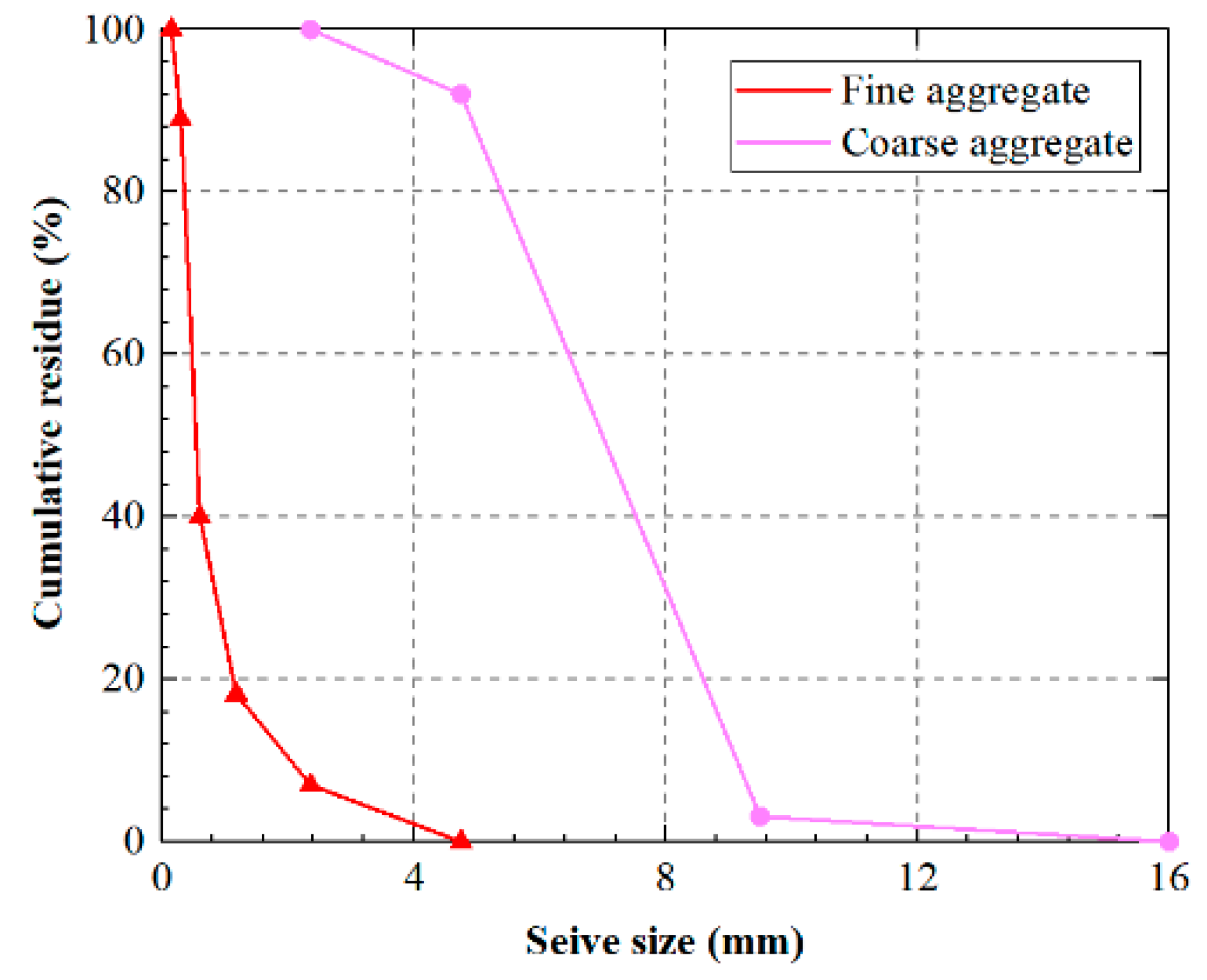
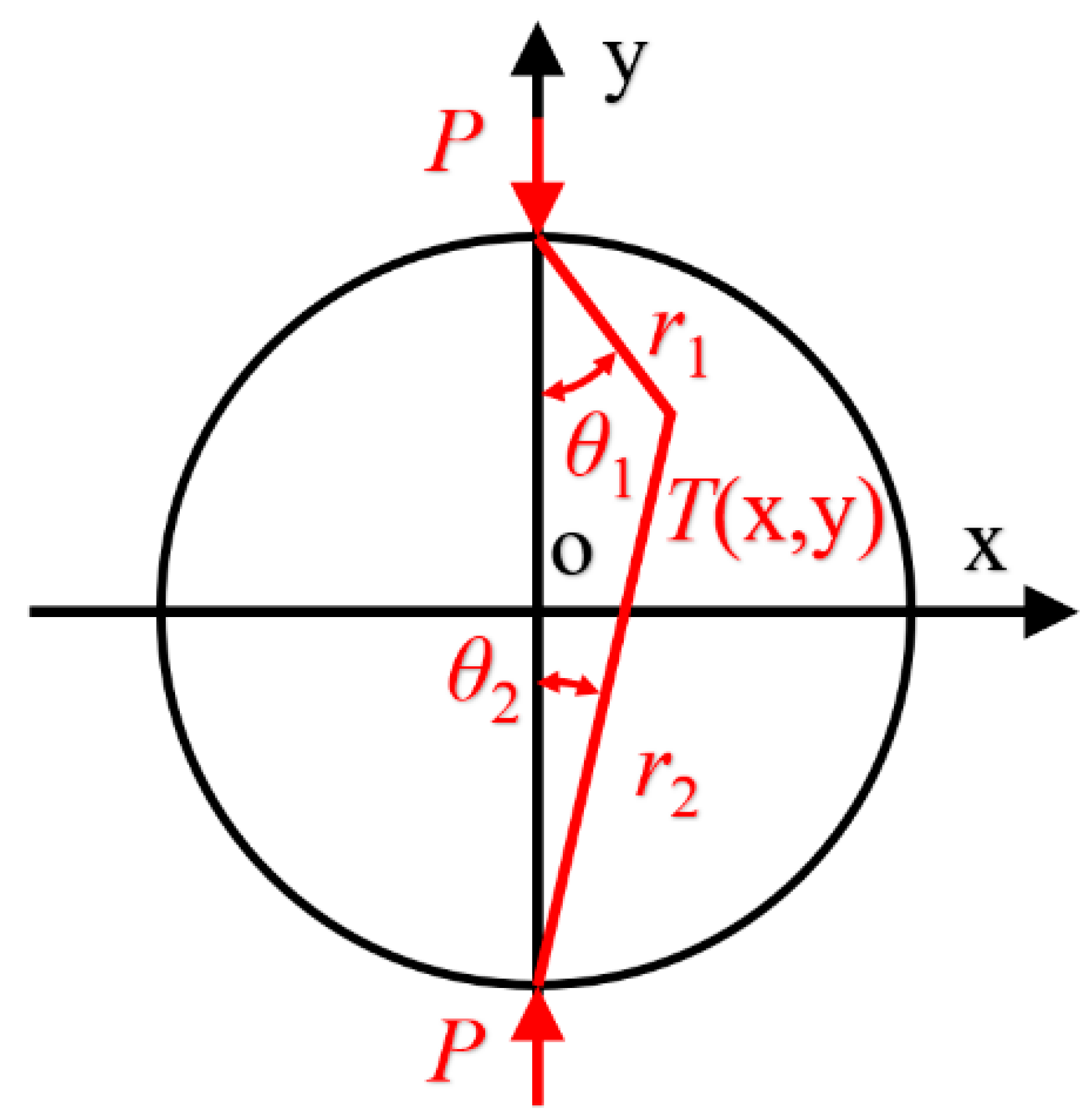

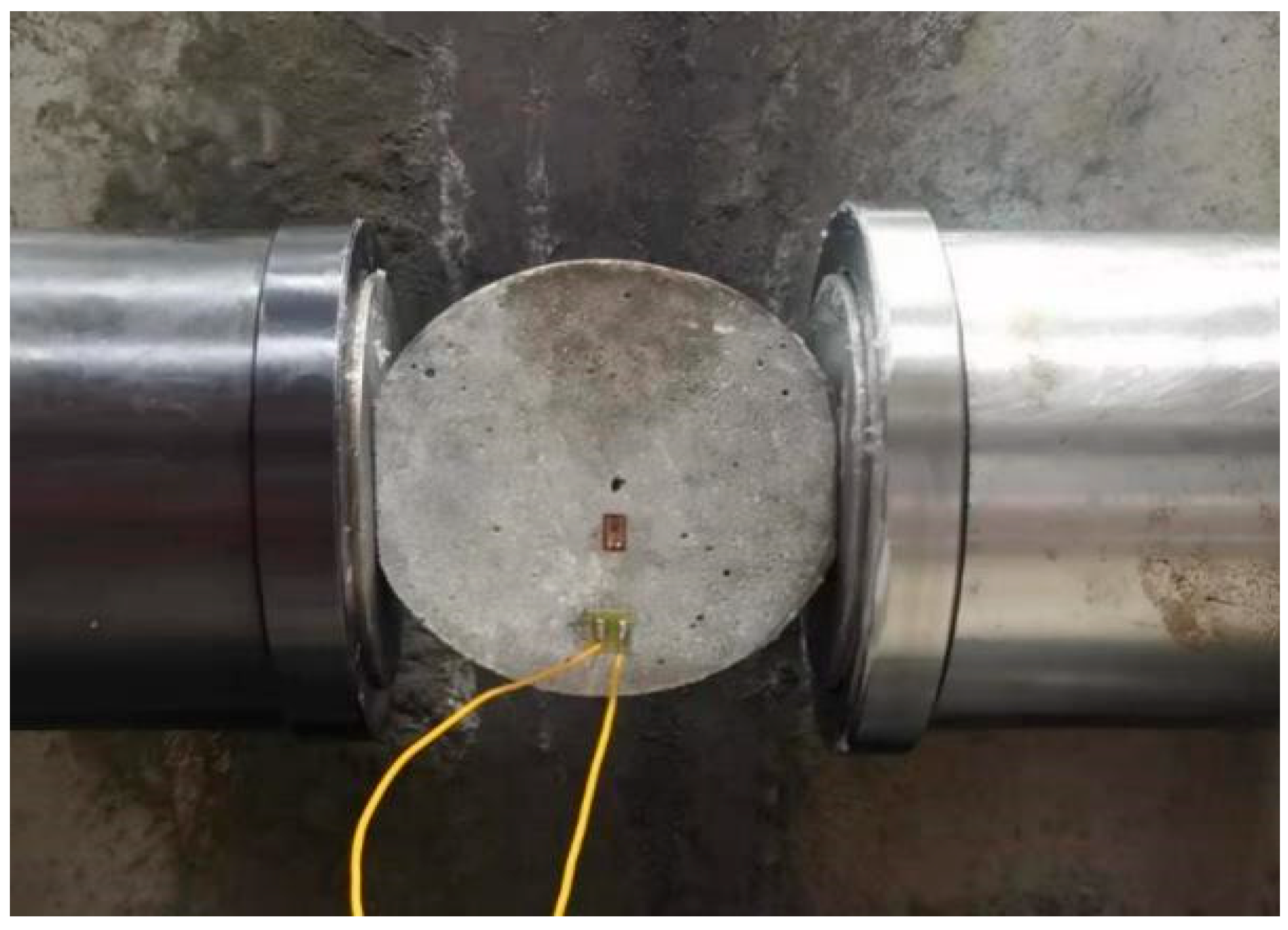
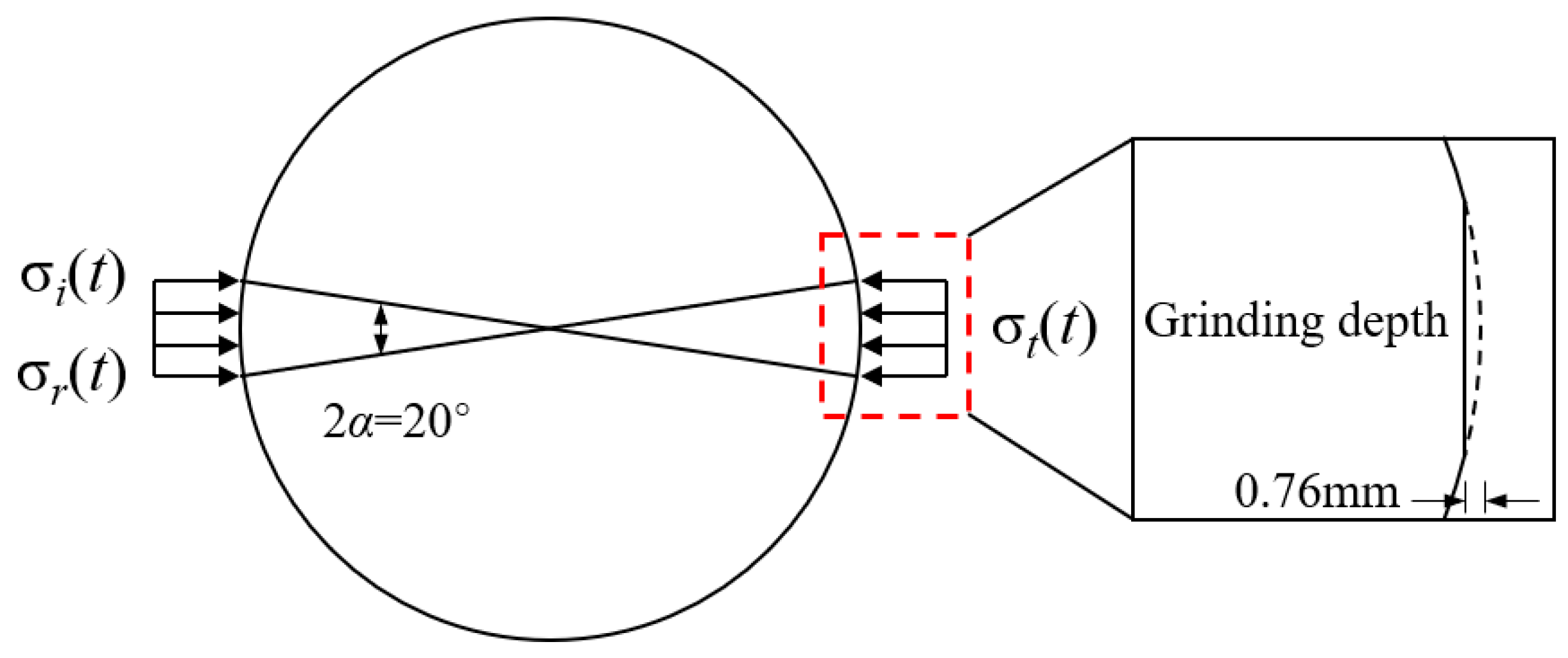
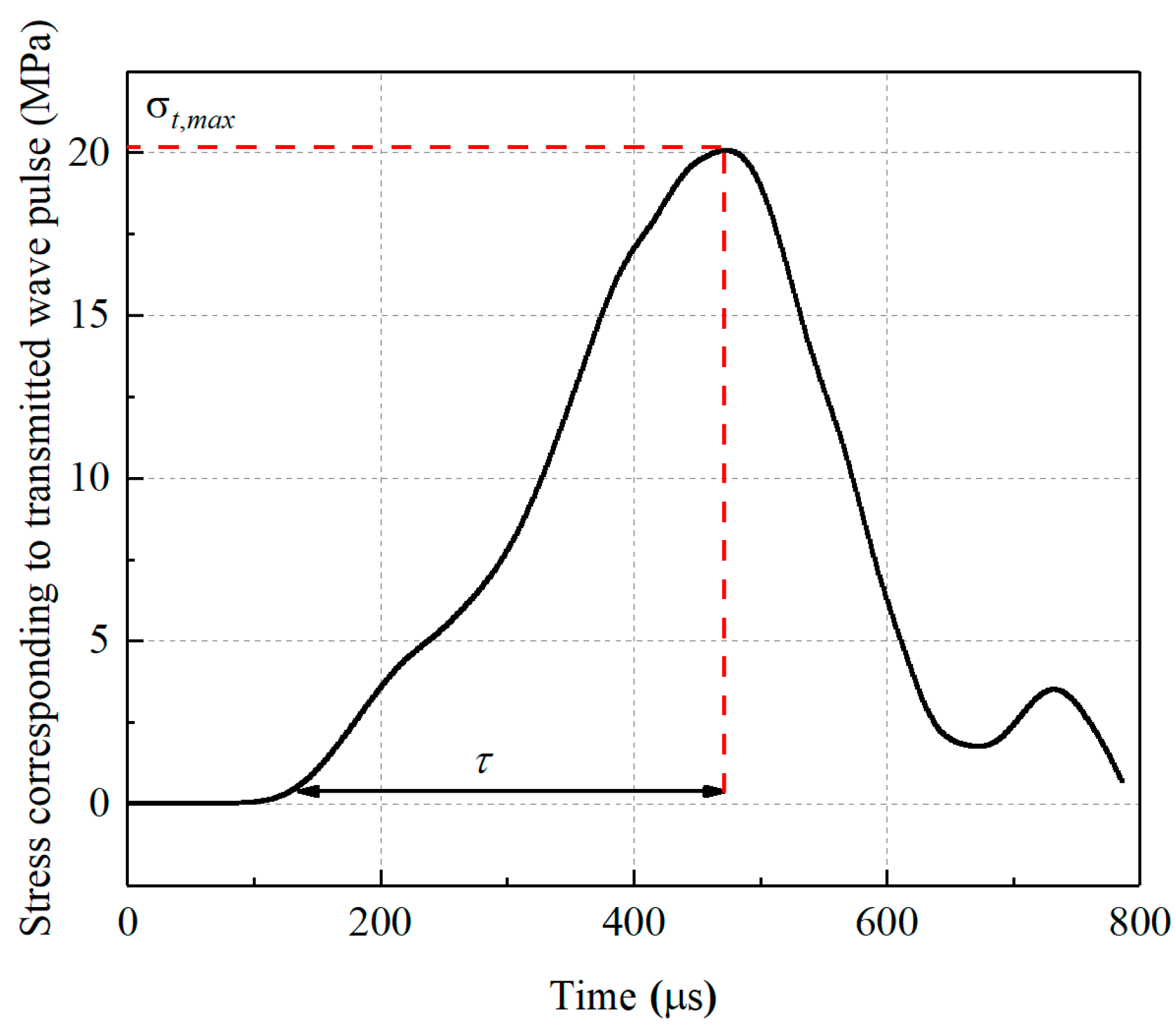

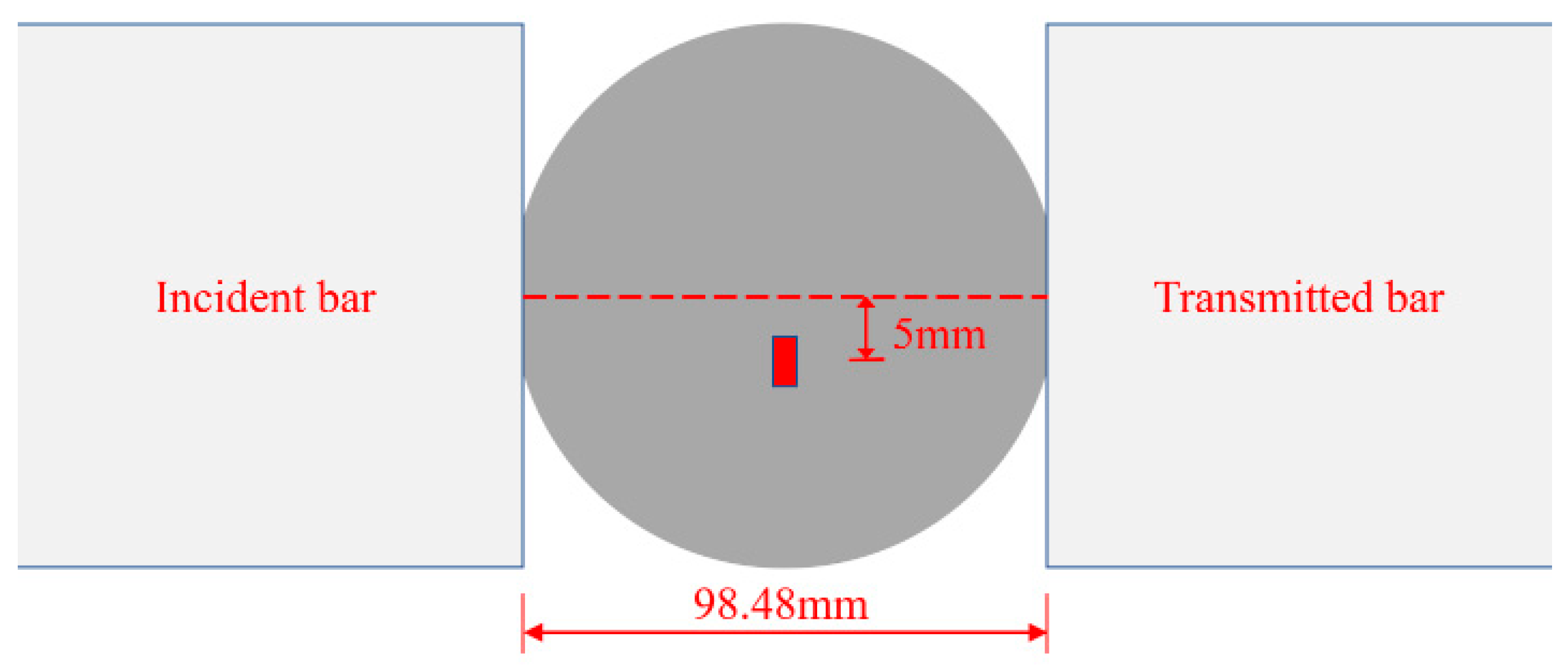
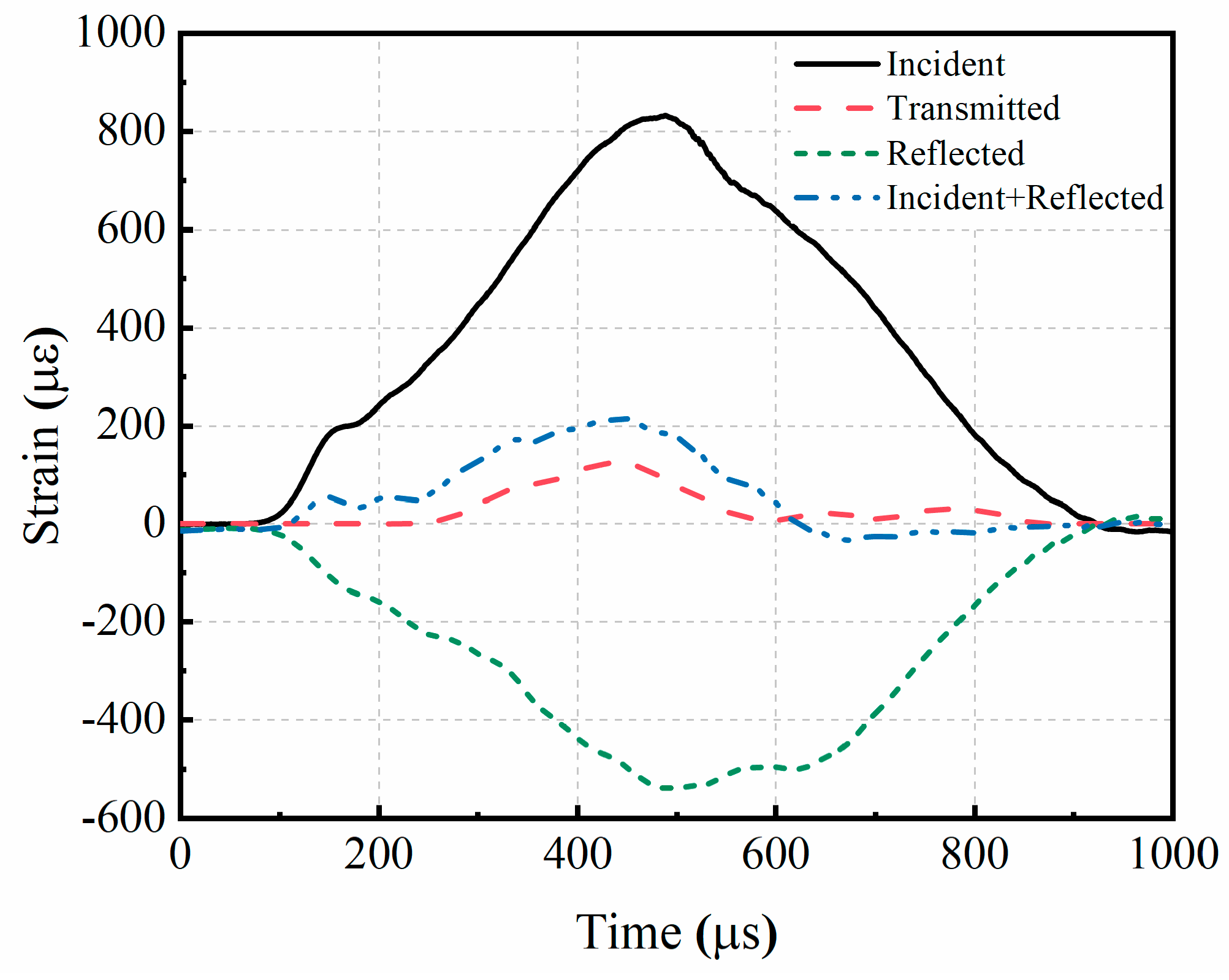

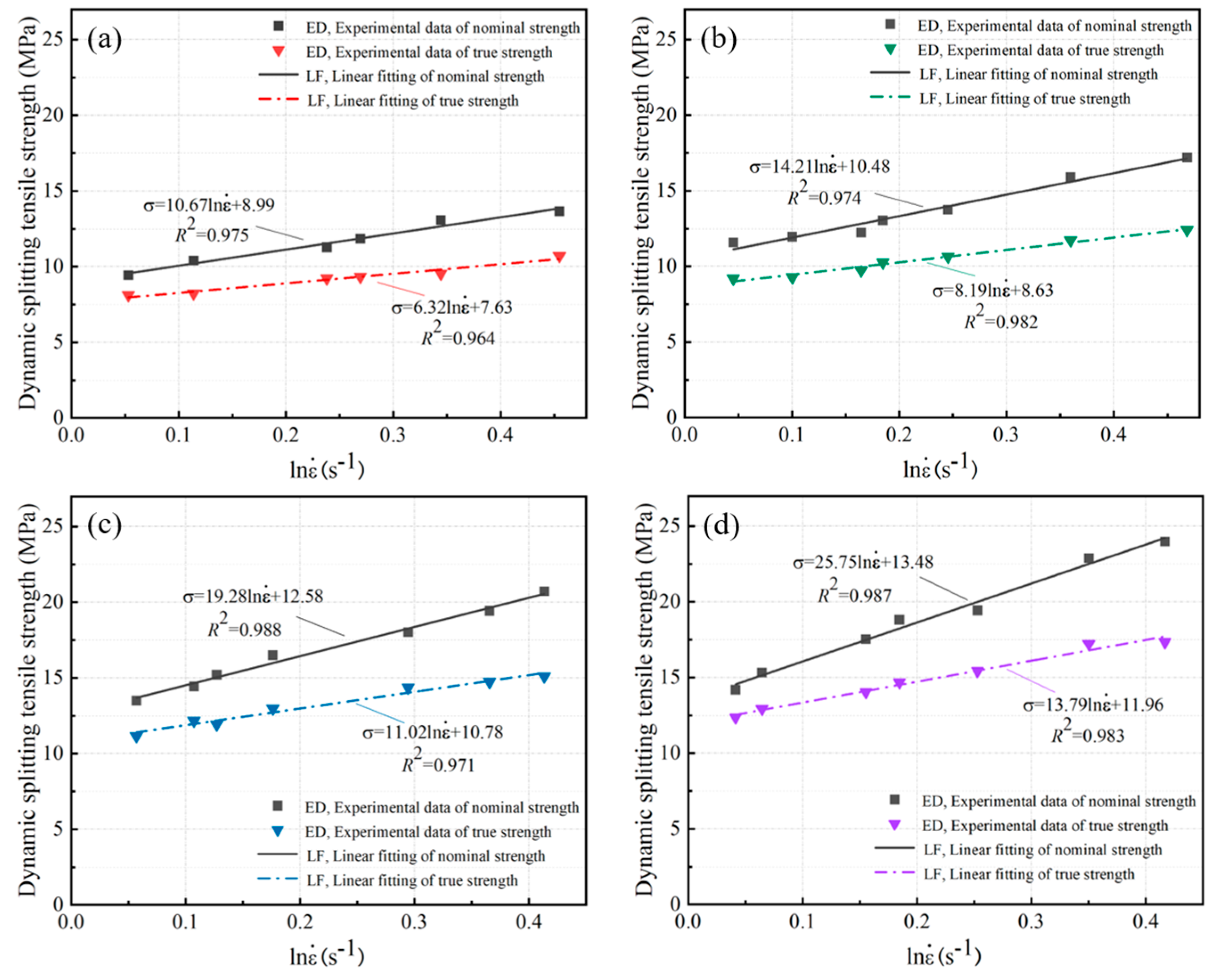

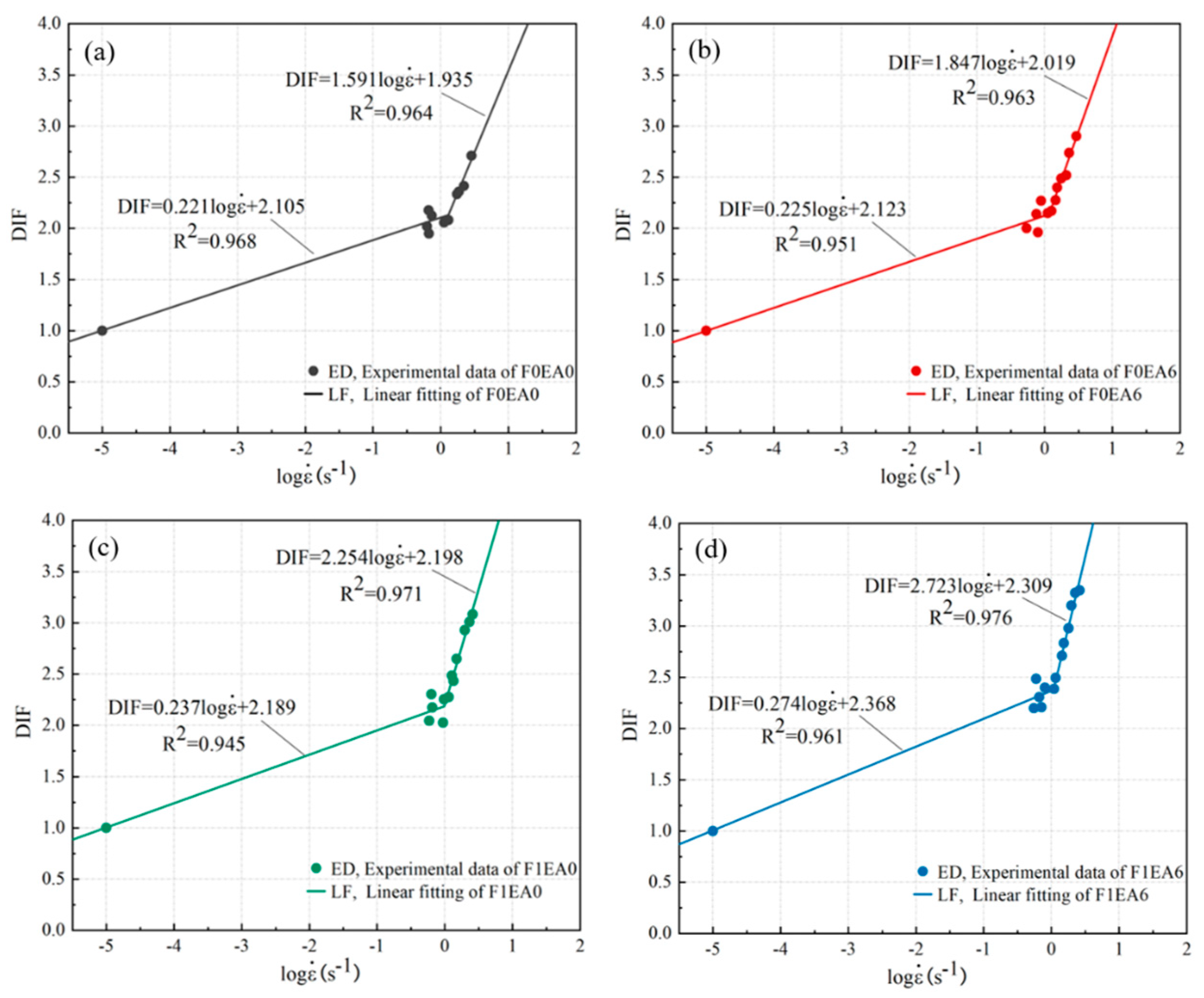
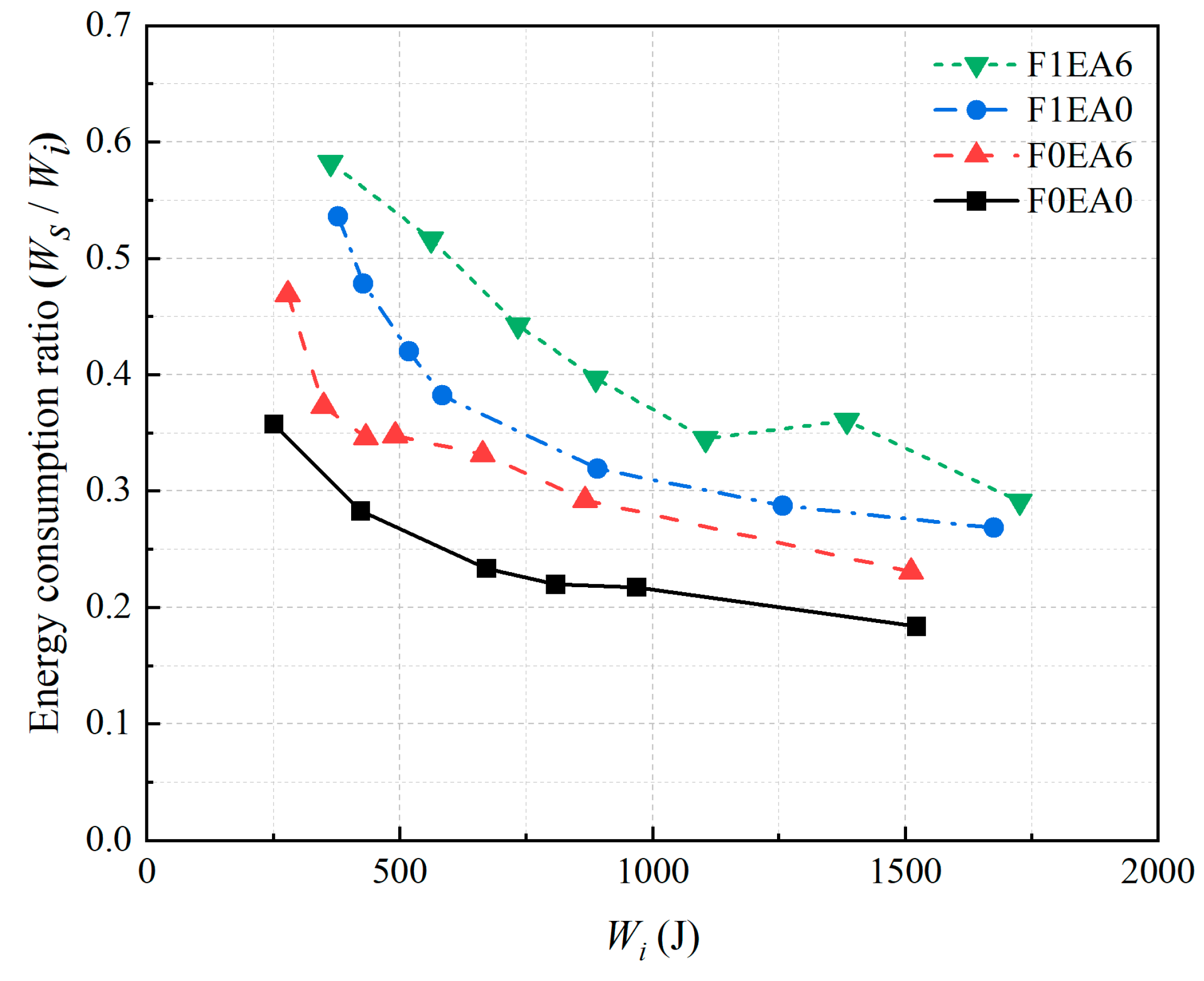
| Aggregate Type | F0EA0 | F1EA0 | F0EA6 | F1EA6 |
|---|---|---|---|---|
| Cement (kg/m3) | 552.27 | 546.74 | 552.08 | 546.56 |
| Sea water (kg/m3) | 221.61 | 219.40 | 220.75 | 218.54 |
| Sea sand (kg/m3) | 774.59 | 766.84 | 744.79 | 737.34 |
| Coarse aggregate (kg/m3) | 788.60 | 780.71 | 788.60 | 780.71 |
| Glass fibers (kg/m3) | 0.00 | 26.80 | 0.00 | 26.80 |
| Swelling agent (kg/m3) | 0.00 | 0.00 | 33.12 | 32.79 |
| Superplasticizer (kg/m3) | 11.05 | 10.93 | 11.70 | 11.59 |
| Specimen | B (mm) | σ (GPa/s) | ε (s−1) | ftd (MPa) | ftd′ (MPa) | fts (MPa) | DIF | S0 |
|---|---|---|---|---|---|---|---|---|
| F0EA0-1 | 44.80 | 39.73 | 1.13 | 9.44 | 8.12 | 3.95 | 2.06 | 0.16 |
| F0EA0-2 | 48.24 | 45.77 | 1.30 | 10.39 | 8.22 | 3.95 | 2.08 | 0.26 |
| F0EA0-3 | 49.19 | 61.15 | 1.73 | 11.28 | 9.22 | 3.95 | 2.33 | 0.22 |
| F0EA0-4 | 49.50 | 78.05 | 2.21 | 13.07 | 9.53 | 3.95 | 2.41 | 0.37 |
| F0EA0-5 | 47.45 | 100.75 | 2.85 | 13.65 | 10.70 | 3.95 | 2.71 | 0.28 |
| F0EA6-1 | 50.75 | 40.51 | 1.11 | 11.58 | 9.20 | 4.28 | 2.15 | 0.26 |
| F0EA6-2 | 51.00 | 56.07 | 1.53 | 13.04 | 10.26 | 4.28 | 2.40 | 0.27 |
| F0EA6-3 | 50.40 | 64.54 | 1.76 | 13.75 | 10.65 | 4.28 | 2.49 | 0.29 |
| F0EA6-4 | 50.01 | 83.94 | 2.29 | 15.91 | 11.72 | 4.28 | 2.74 | 0.36 |
| F0EA6-5 | 49.92 | 107.46 | 2.94 | 17.19 | 12.41 | 4.28 | 2.90 | 0.39 |
| F1EA0-1 | 55.77 | 41.46 | 1.14 | 13.49 | 11.15 | 4.90 | 2.28 | 0.21 |
| F1EA0-2 | 53.53 | 54.45 | 1.50 | 16.5 | 12.97 | 4.90 | 2.65 | 0.27 |
| F1EA0-3 | 53.50 | 71.47 | 1.97 | 18.02 | 14.35 | 4.90 | 2.93 | 0.26 |
| F1EA0-4 | 52.78 | 84.15 | 2.32 | 19.43 | 14.74 | 4.90 | 3.01 | 0.32 |
| F1EA0-5 | 52.54 | 93.94 | 2.59 | 20.71 | 15.10 | 4.90 | 3.08 | 0.37 |
| F1EA6-1 | 51.55 | 42.97 | 1.10 | 14.18 | 12.36 | 5.18 | 2.38 | 0.15 |
| F1EA6-2 | 50.74 | 59.79 | 1.53 | 18.81 | 14.67 | 5.18 | 2.83 | 0.28 |
| F1EA6-3 | 51.02 | 70.17 | 1.79 | 19.43 | 15.43 | 5.18 | 2.98 | 0.26 |
| F1EA6-4 | 51.80 | 87.51 | 2.24 | 22.88 | 17.21 | 5.18 | 3.32 | 0.33 |
| F1EA6-5 | 50.68 | 102.13 | 2.61 | 23.98 | 17.34 | 5.18 | 3.34 | 0.38 |
| Specimen | a | b | R2 | Fitting Equation |
|---|---|---|---|---|
| F0EA0 | 0.131 | 0.281 | 0.526 | S0 = 0.131 lnσ-0.281 |
| F0EA6 | 0.136 | 0.259 | 0.849 | S0 = 0.136 lnσ-0.259 |
| F1EA0 | 0.169 | 0.426 | 0.832 | S0 = 0.169 lnσ-0.426 |
| F1EA6 | 0.241 | 0.734 | 0.928 | S0 = 0.241 lnσ-0.734 |
| Specimen | a | b | c | d | Critical Strain Rate (s−1) |
|---|---|---|---|---|---|
| F0EA0 | 0.221 | 2.105 | 1.591 | 1.935 | 1.31 |
| F0EA6 | 0.225 | 2.123 | 1.847 | 2.019 | 1.28 |
| F1EA0 | 0.237 | 2.189 | 2.254 | 2.198 | 1.06 |
| F1EA6 | 0.274 | 2.368 | 2.723 | 2.309 | 1.08 |
| Specimen | Wi (J) | Wr (J) | Wt (J) | Ws (J) | Ws/Wi |
|---|---|---|---|---|---|
| F0EA0-1 | 251.31 | 156.38 | 5.07 | 89.86 | 0.358 |
| F0EA0-2 | 423.02 | 299.45 | 3.88 | 119.69 | 0.283 |
| F0EA0-3 | 672.00 | 510.30 | 4.73 | 156.97 | 0.234 |
| F0EA0-4 | 968.61 | 751.21 | 6.83 | 210.57 | 0.217 |
| F0EA0-5 | 1522.71 | 1235.94 | 7.02 | 279.74 | 0.184 |
| F0EA6-1 | 278.64 | 137.97 | 9.98 | 130.69 | 0.469 |
| F0EA6-2 | 491.06 | 311.81 | 8.62 | 170.63 | 0.347 |
| F0EA6-3 | 664.46 | 434.51 | 9.49 | 220.45 | 0.332 |
| F0EA6-4 | 866.82 | 599.97 | 13.46 | 253.40 | 0.292 |
| F0EA6-5 | 1512.10 | 1150.93 | 12.41 | 348.76 | 0.231 |
| F1EA0-1 | 378.60 | 162.21 | 13.51 | 202.88 | 0.536 |
| F1EA0-2 | 584.48 | 339.56 | 21.62 | 223.30 | 0.382 |
| F1EA0-3 | 891.83 | 590.55 | 16.45 | 284.83 | 0.319 |
| F1EA0-4 | 1257.96 | 878.58 | 17.71 | 361.66 | 0.288 |
| F1EA0-5 | 1675.57 | 1204.51 | 21.69 | 449.38 | 0.268 |
| F1EA6-1 | 363.17 | 144.09 | 7.60 | 211.48 | 0.582 |
| F1EA6-2 | 888.08 | 517.75 | 17.89 | 352.44 | 0.397 |
| F1EA6-3 | 1105.52 | 708.25 | 15.84 | 381.44 | 0.345 |
| F1EA6-4 | 1384.49 | 862.06 | 23.29 | 499.14 | 0.361 |
| F1EA6-5 | 1726.76 | 1206.22 | 17.95 | 502.59 | 0.291 |
| Tensile Strength Testing | Test Method | Advantage | Limitation |
|---|---|---|---|
| Static tensile strength | Direct stretching | Simple and directly operable. | High precision requirements for experimental operation. Difficult to realize the uniaxial tensile stress state. It is easy to lead to the local stress concentration of the specimen. The appearance of a non-standard damage mode. |
| Static Brazilian disc test | Avoids localized stress concentration, easy and convenient to conduct the experiments. | It is difficult to truly characterize the dynamic tensile properties by static loading. | |
| Dynamic tensile strength | Brazilian disc test with an SHPB device | Clever measurement method to more accurately reflect the damage pattern under dynamic impact loading. | The measured intensity is anticipated to exceed the real value. |
Disclaimer/Publisher’s Note: The statements, opinions and data contained in all publications are solely those of the individual author(s) and contributor(s) and not of MDPI and/or the editor(s). MDPI and/or the editor(s) disclaim responsibility for any injury to people or property resulting from any ideas, methods, instructions or products referred to in the content. |
© 2024 by the authors. Licensee MDPI, Basel, Switzerland. This article is an open access article distributed under the terms and conditions of the Creative Commons Attribution (CC BY) license (https://creativecommons.org/licenses/by/4.0/).
Share and Cite
Zhu, H.; Xiong, Z.; Song, Y.; Zhou, K.; Su, Y. Effect of Expansion Agent and Glass Fiber on the Dynamic Splitting Tensile Properties of Seawater–Sea-Sand Concrete. Buildings 2024, 14, 217. https://doi.org/10.3390/buildings14010217
Zhu H, Xiong Z, Song Y, Zhou K, Su Y. Effect of Expansion Agent and Glass Fiber on the Dynamic Splitting Tensile Properties of Seawater–Sea-Sand Concrete. Buildings. 2024; 14(1):217. https://doi.org/10.3390/buildings14010217
Chicago/Turabian StyleZhu, Huanyu, Zhe Xiong, Yuying Song, Keting Zhou, and Yue Su. 2024. "Effect of Expansion Agent and Glass Fiber on the Dynamic Splitting Tensile Properties of Seawater–Sea-Sand Concrete" Buildings 14, no. 1: 217. https://doi.org/10.3390/buildings14010217
APA StyleZhu, H., Xiong, Z., Song, Y., Zhou, K., & Su, Y. (2024). Effect of Expansion Agent and Glass Fiber on the Dynamic Splitting Tensile Properties of Seawater–Sea-Sand Concrete. Buildings, 14(1), 217. https://doi.org/10.3390/buildings14010217







